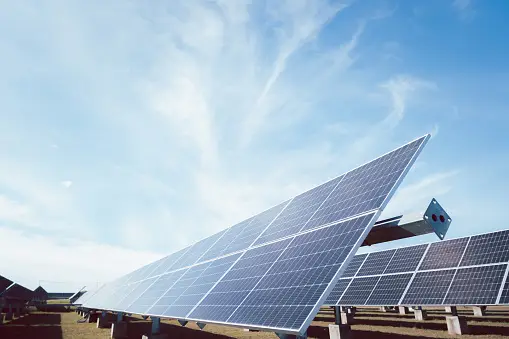Solar energy is one of the most sustainable and environmentally friendly sources of power. As the world shifts towards renewable energy solutions. solar panels have become a vital component in reducing carbon footprints and addressing global energy needs. However, not all solar panels are created equal. Understanding the different types of solar panel technologies can help consumers and businesses make informed decisions about their energy investments.
In this article, we will explore the various types of solar panel technologies. their advantages, disadvantages, and applications.
Monocrystalline Solar Panels
What are they? Monocrystalline solar panels are made from a single crystal structure. These panels are manufactured using a process that grows a single, continuous silicon crystal, which is then sliced into wafers.
Key Features:
- High Efficiency: Monocrystalline panels boast the highest efficiency levels, typically ranging from 17% to 22%.
- Durability: They have a long lifespan, often exceeding 25 years.
- Appearance: Known for their uniform black color, which gives them a sleek, aesthetic look.
Advantages:
- High efficiency even in low-light conditions.
- Space-saving due to their high energy output per square foot.
- Longevity and reliability.
Disadvantages:
- Higher production costs, leading to a higher upfront investment.
- Performance can slightly degrade if partially shaded.
Applications: Ideal for residential, commercial, and industrial setups where space is limited, but efficiency is a priority.
Polycrystalline Solar Panels
What are they? Polycrystalline solar panels are made from multiple silicon crystals melted together. This process is simpler and more cost-effective compared to monocrystalline panel production.
Key Features:
- Moderate Efficiency: Typically ranges from 15% to 18%.
- Appearance: These panels have a bluish hue with a less uniform texture.
Advantages:
- Lower production costs make them more affordable.
- Environmentally friendly manufacturing process with less waste.
Disadvantages:
- Slightly lower efficiency compared to monocrystalline panels.
- Larger installations may be required to achieve the same energy output as monocrystalline panels.
Applications: Popular for residential installations, especially where cost is a significant factor.
Thin-Film Solar Panels
What are they? Thin-film solar panels are made by depositing thin layers of photovoltaic material onto a substrate such as glass, plastic, or metal. These materials include cadmium telluride (CdTe). amorphous silicon (a-Si), and copper indium gallium selenide (CIGS).
Key Features:
- Lightweight and Flexible: Ideal for unconventional installations.
- Low Efficiency: Typically ranges from 10% to 12%.
Advantages:
- Flexible designs allow integration into various surfaces, including curved structures.
- Performs better under high temperatures and partial shading.
- Cost-effective for large-scale installations.
Disadvantages:
- Shorter lifespan and lower efficiency compared to crystalline panels.
- Requires more space for the same energy output.
Applications: Suitable for large-scale solar farms, portable applications, and building-integrated photovoltaics (BIPV).
Bifacial Solar Panels
What are they? Bifacial solar panels can capture sunlight from both sides of the panel. enhancing energy production. They are usually made using monocrystalline or polycrystalline silicon.
Key Features:
- Higher Energy Output: Can generate up to 30% more energy compared to traditional panels.
- Durability: Double glass or transparent back sheets provide added strength.
Advantages:
- Increased efficiency due to dual-sided energy absorption.
- Durable design reduces maintenance needs.
Disadvantages:
- Higher initial cost compared to traditional panels.
- Installation requires specific conditions to maximize reflected sunlight capture.
Applications: Commonly used in solar farms and commercial installations where reflective surfaces can optimize performance.
PERC Solar Panels
What are they? Passivated Emitter and Rear Cell (PERC) technology is an enhancement of traditional monocrystalline or polycrystalline panels. It adds a passivation layer to the back of the cells, improving light capture and reducing electron recombination.
Key Features:
- Enhanced Efficiency: Higher energy output compared to standard panels.
- Better Low-Light Performance: Operates effectively in overcast conditions.
Advantages:
- Improved efficiency without significantly increasing production costs.
- Compatible with existing installation systems.
Disadvantages:
- Potential for slightly higher degradation rates under extreme heat conditions.
Applications: Widely used in residential and commercial installations where efficiency improvements are desirable.
Concentrated Solar Panels (CSP)
What are they? CSP systems use mirrors or lenses to concentrate sunlight onto a small area, where photovoltaic cells convert it into electricity.
Key Features:
- High Efficiency: Can exceed 40% under optimal conditions.
- Requires Direct Sunlight: Performs best in sunny, cloud-free environments.
Advantages:
- Extremely high efficiency.
- Suitable for large-scale power generation.
Disadvantages:
- Expensive installation and maintenance.
- Not practical for regions with frequent cloud cover or diffuse sunlight.
Applications: Primarily used in utility-scale solar power plants.
Choosing the Right Solar Panel Technology
Selecting the right solar panel technology depends on several factors:
- Budget: If cost is a major concern, polycrystalline or thin-film panels may be more suitable.
- Space Availability: Monocrystalline or PERC panels are ideal for limited spaces due to their high efficiency.
- Climate Conditions: Thin-film panels or CSP systems may be more effective in high-temperature regions.
- Specific Applications: For building-integrated designs or portable systems, thin-film panels offer flexibility and while bifacial panels are great for maximizing output in reflective environments.
Future Trends in Solar Panel Technology
The solar industry continues to evolve with innovations aimed at improving efficiency, reducing costs, and expanding applications:
- Perovskite Solar Cells: Emerging as a promising alternative with high efficiency and low production costs.
- Transparent Solar Panels: Could be integrated into windows and other surfaces for dual functionality.
- Hybrid Technologies: Combining multiple photovoltaic materials for enhanced performance.
Conclusion
Solar panel technology has come a long way, offering diverse options to meet the growing demand for renewable energy. From high-efficiency monocrystalline panels to versatile thin-film solutions, each type has unique advantages tailored to specific needs. By understanding these technologies. consumers can make informed choices that align with their energy goals and environmental commitments.
Investing in the right solar technology is not just about harnessing the sun’s power; it’s about building a sustainable future for generations to come.
FAQs
Which type of solar panel is the most efficient?
Monocrystalline solar panels are the most efficient, with efficiency levels ranging from 17% to 22%. They are perfect for installations where space is limited.
2. Are thin-film solar panels suitable for residential use?
Thin-film panels are lightweight and flexible but have lower efficiency and they are better suited for large-scale installations or unconventional applications.
3. What are bifacial solar panels best for?
Bifacial solar panels are ideal for maximizing energy output in environments with reflective surfaces. Such as solar farms or commercial setups.
4. How do PERC solar panels differ from standard panels?
PERC panels have a passivation layer that enhances light capture and efficiency. making them more effective in low-light conditions.
5. Can CSP systems be used for residential purposes?
CSP systems are designed for large-scale power generation and are not practical for residential use due to their size and cost.
6. How long do solar panels typically last?
Most solar panels have a lifespan of 25 to 30 years with performance gradually decreasing over time.
7. What factors should I consider when choosing a solar panel?
When selecting a solar panel, consider your budget, space availability and climate conditions, and energy requirements to find the best fit.





